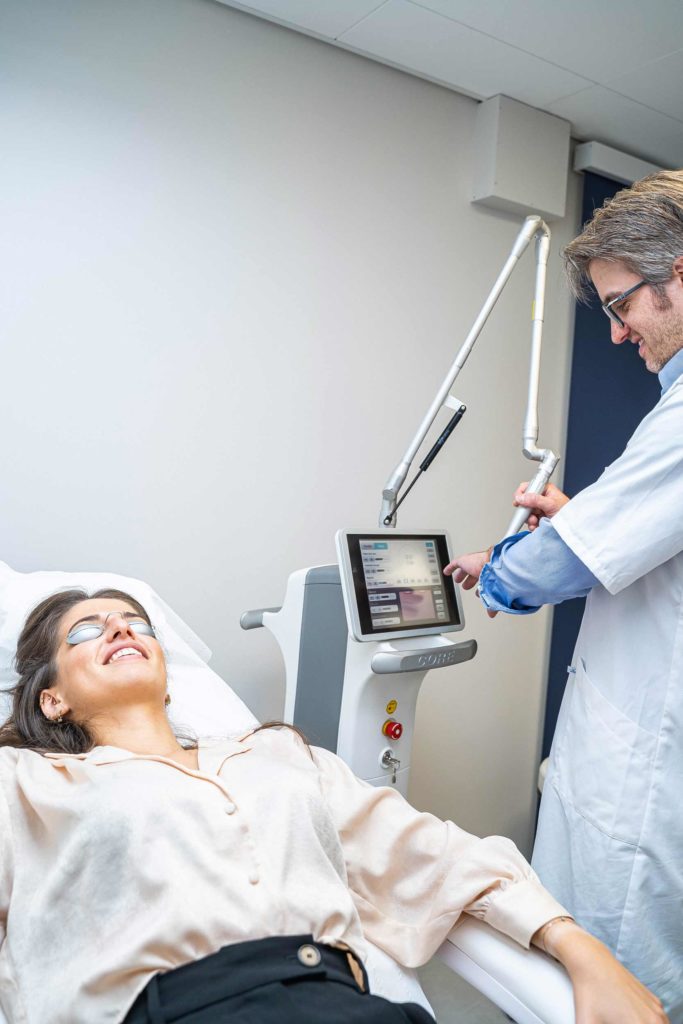The CO2 laser allows the vaporization removal of moles, warts and skin nodules without leaving a visible scar. Thus, it can treat a large number of highly disabling aesthetic requests in safe conditions.
Carbon dioxide (CO2) lasers are gas-powered devices, emitted in infrared, with the principle of destroying dermatological lesions.
CO2 lasers have been used for more than 27 years in surgical procedures, aesthetic and dermatological care: medium and fine wrinkles, scars of various origins, pigment disorders and dilated pores.

In the 3 to 4 weeks before the laser treatment, the doctor will restrict the skin’s melanin production to limit the risk of post-inflammatory pigment disorders occurring. This precaution is important on southern and Asian skin.
During this entire preparation period, the patient will avoid any exposure to the sun, UV and will refrain from any use of self-tanner.
In the week prior to the laser procedure, the patient will use a moisturizer regularly to prepare the skin.
Similarly, a prescription for an anti-herpes medication will be started in the 2 to 4 days prior to the CO2 procedure to limit the risk of a herpes outbreak.
On the day of the laser session, the patient will not wear makeup, may use her moisturizer to properly prepare the skin. A prescription for a traditional homeopathic or light relaxing treatment may possibly be offered, in the 2 hours preceding the laser procedure.
At the same time, the patient will apply an anesthetic cream to the face. The cream, applied in a thick layer will be maintained under a bandage. The bandage and anesthetic will be carefully removed and cleaned at the doctor’s office.
Within minutes of the fractional CO2 laser treatment, the skin is covered with a thin whitish film replicating the arrangement of the fractional impacts. The mesh appearance is similar to a very thin cloth, much like a medical compress.
This appearance quickly disappears to give way, on the first day, to an appearance of a strong tan, some pigmentation and a sensation of heat over the entire lasered skin surface. The sensation of heat, which can be uncomfortable, is controlled by multi-daily spraying of thermal water in a pressurized bottle, by taking a first level analgesic, by applying moisturizing and healing creams several times a day. Very small crusts may eventually form. In the 3 to 4 days following the fractional laser treatment, theskin peels in the same way as after a strong sunburn. At 5 or 6 day, it is usually possible to wear makeup to mask the end of the healing and to go back to work.
The passage of the laser reacts by vaporizing the superficial layers of the skin. A phenomenon of remodeling and collagen synthesis is then initiated and continues in the months following the laser session.
The depth of ablation of the superficial layers depends on the parameters of the machine. The settings of modern devices allow to define the desired effects varying between a pure ablation and a preferential thermal effect.
